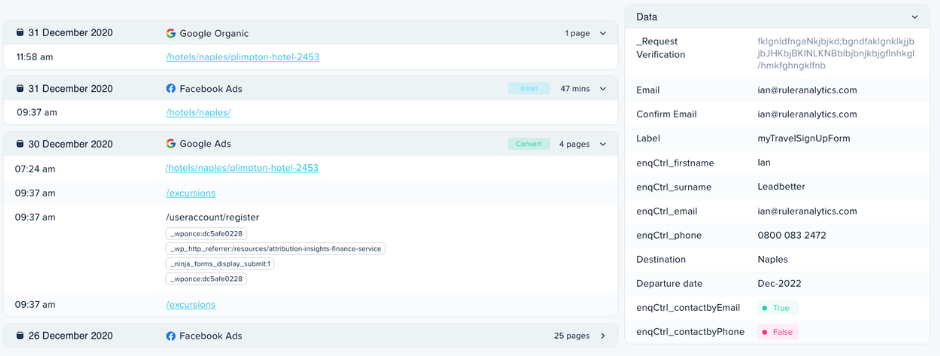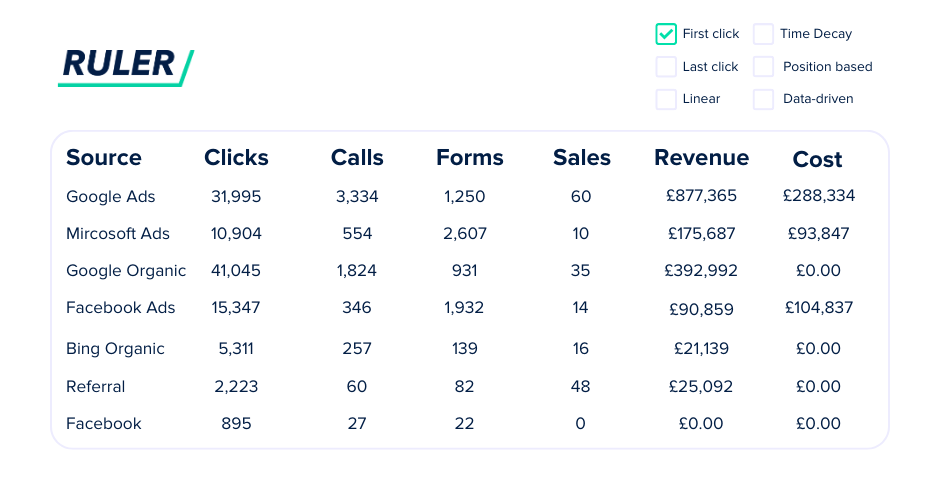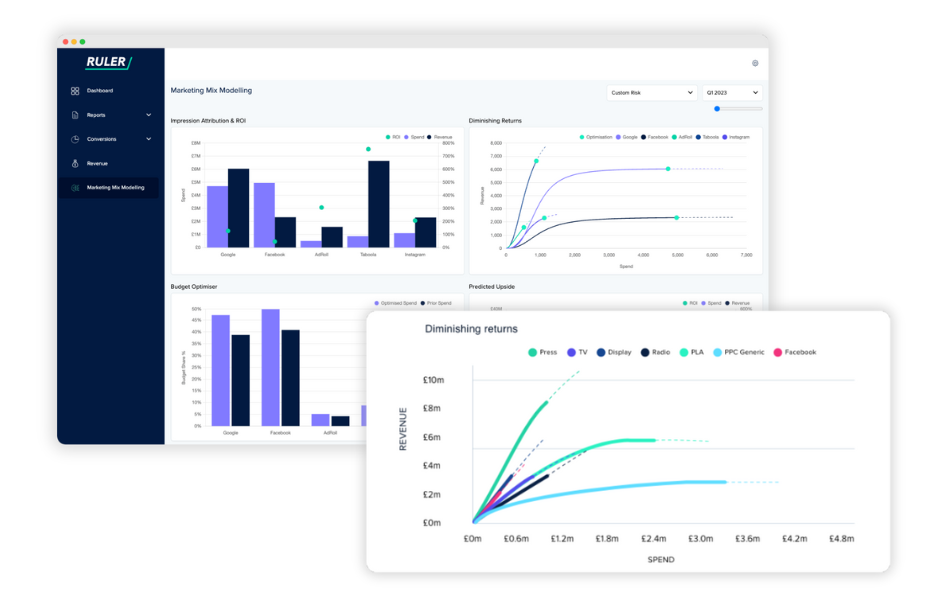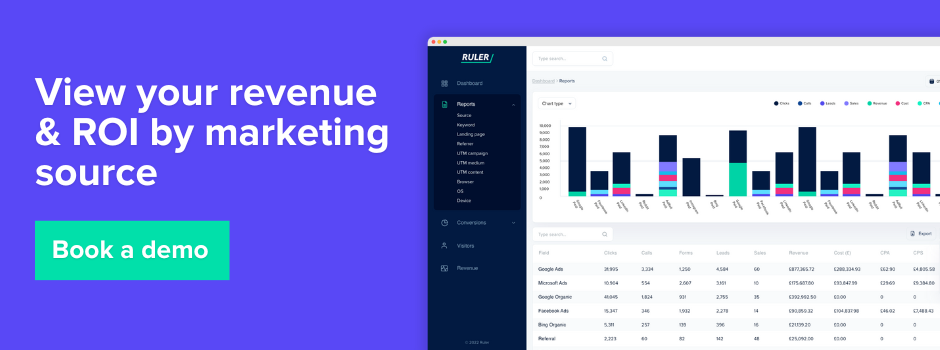By understanding the common data discrepancies between Google Ads and Analytics, you can take action to increase the quality of your data and improve the accuracy of your reporting.
Despite being native platforms, Google Ads and Analytics often report different results.
Advertisers have long struggled to reconcile the data in Google Ads and Analytics, as the two platforms track performance differently.
However, with a greater understanding of the data discrepancies, advertisers can develop strategies to minimise the mismatch and focus on delivering more value.
For this article, we’ll discuss:
💡 TL;DR
– Data discrepancies occur when the two platforms display different results, which can lead to inaccurate assumptions about marketing performance and budget decisions.
– The causes of discrepancies include improper configuration, URL tagging issues, and differences between click and conversion tracking.
– To minimise discrepancies between Google Ads and Analytics, link your accounts correctly, enable auto-tagging, track both clicks and session metrics and consider call tracking for measuring call conversions.
– Attribution can capture all interactions throughout an individual customer journey to provide a single source of truth for your PPC campaigns.
– MMM can take a top-down approach using rigorous statistical methodology and machine learning to assess the impact of all channels on revenue, including channels with a high volume of impressions, such as Google and Facebook Ads.
Data discrepancies in analytics are when two or more platforms display a difference between data and information.
Small discrepancies between Google Ads and Analytics are common and not usually cause for concern.
However, large discrepancies can lead to inaccurate assumptions about marketing performance and poor budgetary decisions.
With a greater understanding of data discrepancies, you can develop the appropriate strategies to help minimise or overcome them.
Accurate data is crucial when it comes to analysing performance and developing a strategy for increased revenue.
Data discrepancies in Google Ads and Analytics are often caused by a variety of factors which we’ve broken down into the following categories:
For a more in-depth explanation, we recommend that you download our guide on how to solve the data discrepancies between Google Ads and Analytics.
There are several reasons why your Google Ads and Analytics may report different numbers. However, many data discrepancies are due to incorrect (or absent) configuration between Google Ads and Analytics accounts.
If your Google Ads account is not connected to your Google Analytics, your paid traffic may be reported as organic. This can lead to inaccurate attribution of traffic and lead sources, which can be a problem for advertisers, especially those who bid on expensive keywords and need to prove their ROI.
Related: What is lead source and tips from 30+ on how to get started
Also, if you’re an agency or someone who manages multiple PPC campaigns, there’s a possibility that you’ve connected the wrong ad account to your Google Analytics property.
You may have numerous departments within your company that share a single website and Google Analytics account but have separate ad accounts for specific billing purposes.
Having multiple Google Ads accounts can cause a lot of problems and inevitably lead to data inconsistencies within Google Analytics. Whenever possible, you should avoid linking multiple Google Ads to your Google Analytics property.
URL tagging and tracking codes are key to measuring the effectiveness of your marketing, but incorrect setup can lead to inaccurate data and poor decision-making.
If you disable auto-tagging and forget to add manual tags to your URLs, all visitors, including those from Google Ads, will be specified as “organic ” in Analytics. Also, in some instances, you may have to use manual and auto-tagging.
Related: What is GCLID auto-tagging in Google Ads?
Medium and source variables in Google Analytics are case sensitive, and by default, tracks Google paid as “google/cpc”.
If you have used different medium and source variables on your manual tags, then there’s a strong possibility that you’re seeing duplicate entries in Analytics due to incorrect configuration.
If the Analytics tracking code is improperly configured on the landing page or doesn’t fire, Google Analytics will fail to record the session.
Also, it’s not uncommon for marketers to forget to remove the hard coded GA tracking code from the website whenever they migrate over to GTM.
In the event of this happening, the tracking code is duplicated on each landing page, and every Google ad click can lead to two sessions in Analytics.
Google adds a GCLID parameter to URLs to track pay-per-click (PPC) performance in Google Ads and Analytics. Websites that redirect users from one URL to another can lose the GCLID parameter, making it difficult for advertisers to measure PPC performance accurately.
Click and conversion discrepancies between Google Ads and Analytics are expected as both platforms measure performance differently. By understanding some possible causes, you can take effective steps to improve your data accuracy and make smarter decisions to boost your conversion rates.
If you’ve ever compared clicks from your Google ads account with sessions stored in Google Analytics, you might have noticed that the numbers don’t match.
That’s because “Clicks ” in Google Ads and “Sessions ” in Google Analytics are essentially separate metrics and are measured differently.
Clicks are defined by how many times your ad was clicked by your users, whereas a session records an accumulation of user interactions on your website that take place within a specific time frame.
By understanding how clicks and sessions are recorded, you can take full control of your data and make appropriate assumptions about your advertising performance.
It’s not uncommon for a user to click on one of your ads multiple times, especially if they’re engaged in online shopping. If, for some reason, a user clicks on your ad twice within a 30-minute session, Google Ads would report those interactions as two separate clicks, whereas Google Analytics would only show one session.
If you’ve managed PPC campaigns for some time, then you’ve likely heard of click fraud. In the event of that happening, Google Ads will determine clicks and conversions as invalid and automatically remove them from your reports. Unfortunately, Google Analytics can’t filter out invalid sessions resulting from fraudulent activity.
Call and offline conversion tracking is only supported in Google Ads and is not currently available in Analytics. As you can imagine, this is a notable challenge for advertisers who are using Google Ads to drive more offline interactions.
Some data discrepancies between Google Ads and Analytics are unavoidable, but there are a few solutions that can help reduce the differences:
First and foremost, make sure that the correct Google Ads account is linked to your Analytics property. Whenever possible, avoid connecting multiple ad accounts to ensure data is accurate. You can find more details on how to connect and verify your Google Ads and Analytics accounts at Google’s help centre.
Avoid using manual tagging as it’s more susceptible to human error. Whenever possible, enable auto-tagging in your Google Adwords account to ensure data accuracy. We have a guide on how to set up auto-tagging in Google Ads, which can help you get started.
Include both Google Ad clicks and Google Analytics session metrics in your reports. Explain to your clients and company executives that Google Ads and Google Analytics report clicks and sessions “differently”.
If phone calls are an integral part of your lead generation, then there’s a chance that you’re missing out on crucial information about your marketing performance. Using a call tracking solution can provide a single source of truth on which ads are driving the most valuable leads.
The techniques we’ve discussed can help minimise the data discrepancies between Google Ads and Analytics, but they don’t necessarily resolve them. To close the gap between Google Ads and Analytics, you need a solution that can help provide a single source of truth, and also:
Using marketing attribution software like Ruler, you can track visitors on an individual level, allowing you to monitor and measure the exact movements and track cross-channel journeys more cohesively.

Related: How to track view full customer journeys in Ruler Analytics
You can follow individual users and pinpoint which ads, campaigns and landing pages are having the most significant impact on revenue-led metrics.

Unlike multi-touch attribution, which uses click path data, marketing mix modelling takes a top-down approach using rigorous statistical methodology combined with machine learning to assess all channel’s impact on revenue. This includes offline channels with a high volume of impressions, such as Google and Facebook Ads.

Here is a simplified example of how MMM works:
Marketers can use the MMM model to make informed decisions about their marketing budget. For example, if the model shows that a company could expect a significant increase in revenue by increasing its spending on Google Ads, then the company may decide to allocate more of its budget to that channel.
We have a wealth of content on marketing mix modelling and its impact on the future of measurement.
It’s important to remember that Google Ads and Analytics are two completely different platforms.
Sometimes, it’s not necessarily about fixing the discrepancies, it’s about accepting the fact that both Google Ads and Analytics are complementary tools working together to provide a better understanding of your marketing performance.
And, with a tool like Ruler, you can go beyond basic conversion tracking in Google to attribute revenue directly to your advertising efforts.
Which, in turn, can help you prove your impact on bottom line metrics and will allow you to manage and scale budgets into the areas that have the potential to drive more revenue.
Ready to improve the quality of your reporting in Google Ads and Analytics? Book a demo of Ruler Analytics and start attributing revenue directly to your advertising efforts.
